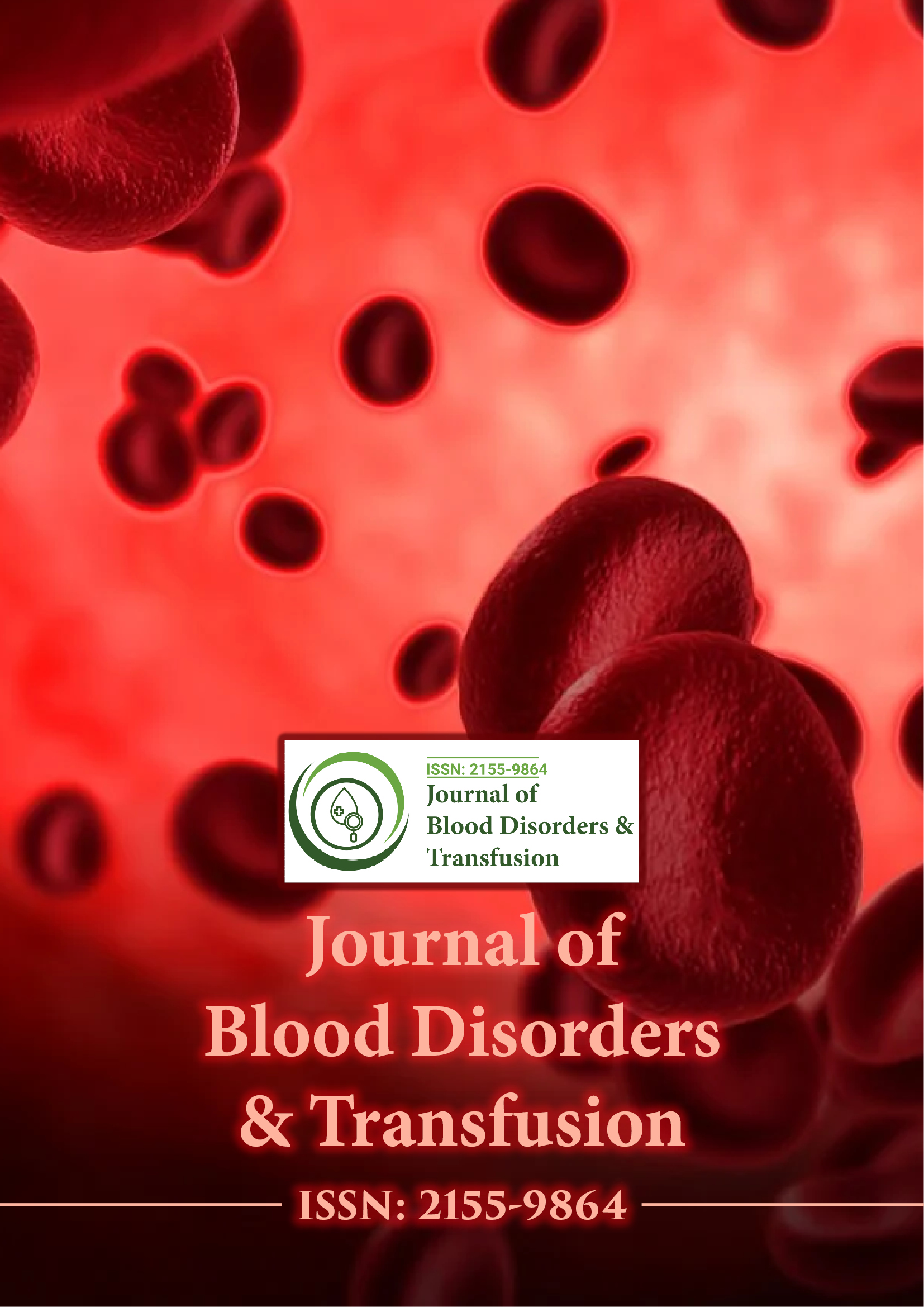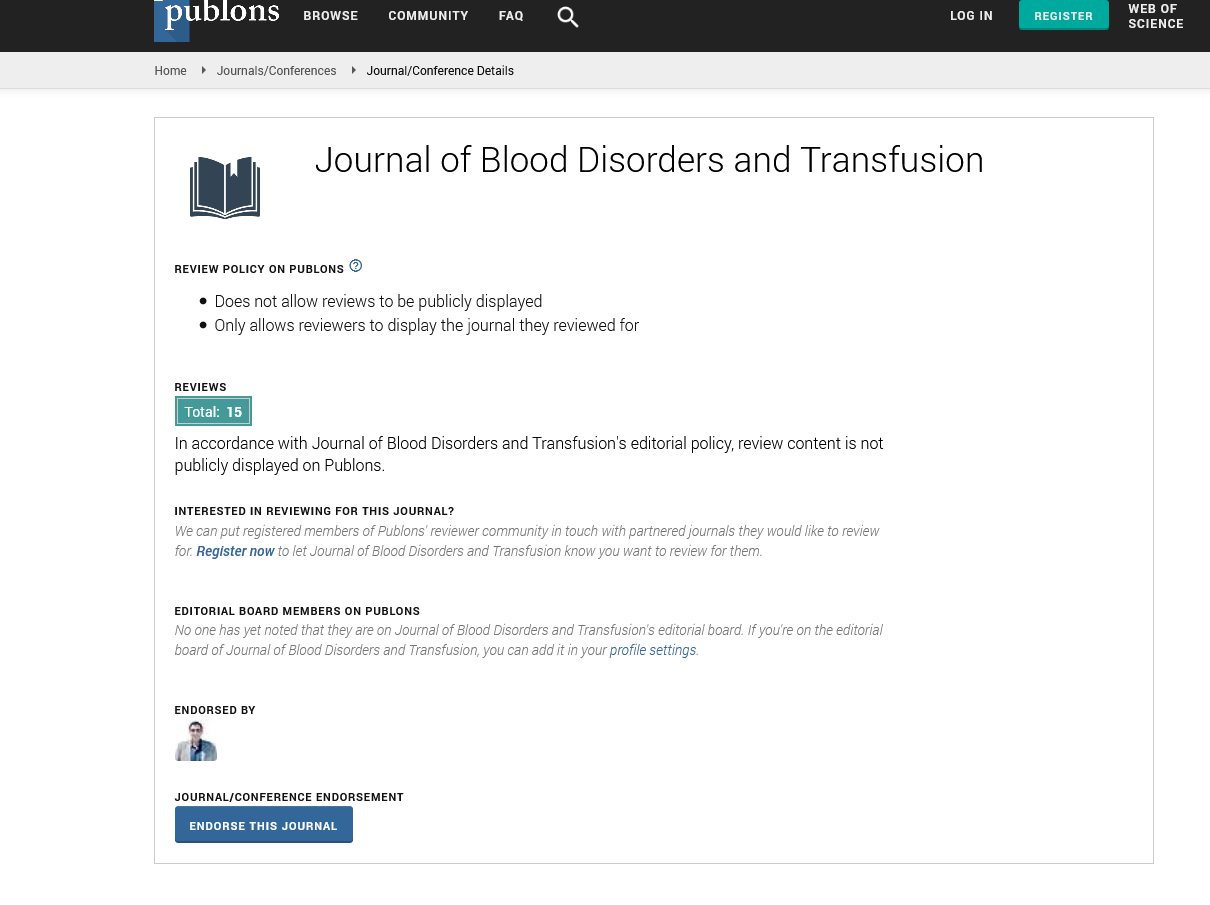Indexed In
- Open J Gate
- Genamics JournalSeek
- JournalTOCs
- Ulrich's Periodicals Directory
- RefSeek
- Hamdard University
- EBSCO A-Z
- OCLC- WorldCat
- Proquest Summons
- Publons
- Geneva Foundation for Medical Education and Research
- Euro Pub
- Google Scholar
Useful Links
Share This Page
Journal Flyer

Open Access Journals
- Agri and Aquaculture
- Biochemistry
- Bioinformatics & Systems Biology
- Business & Management
- Chemistry
- Clinical Sciences
- Engineering
- Food & Nutrition
- General Science
- Genetics & Molecular Biology
- Immunology & Microbiology
- Medical Sciences
- Neuroscience & Psychology
- Nursing & Health Care
- Pharmaceutical Sciences
Perspective - (2025) Volume 16, Issue 3
Immune and Transfusion Impacts of Variations in Cell Surface Glycans
Zoltan Eros*Received: 28-Apr-2025, Manuscript No. JBDT-25-29000; Editor assigned: 01-May-2025, Pre QC No. JBDT-25-29000 (PQ); Reviewed: 15-May-2025, QC No. JBDT-25-29000; Revised: 22-May-2025, Manuscript No. JBDT-25-29000 (R); Published: 29-May-2025, DOI: 10.4172/2155-9864.25.16.623
Description
The ABO blood group system is one of the most significant human blood group systems, central to transfusion medicine and organ transplantation. Discovered by Karl Landsteiner in the early 20th century, it classifies blood into four main types based on the presence or absence of specific carbohydrate antigens on the surface of Red Blood Cells (RBCs): A, B, AB and O. The ABO antigens influence compatibility in blood transfusions and impact various physiological and pathological processes.
Parallel to the ABO system, galectins have emerged as important modulators of immune responses and cell-cell interactions. Galectins interact with glycan structures, including those present on ABO blood group antigens, influencing immune cell behavior and inflammatory processes. Understanding the interactions between ABO blood groups and galectins contributes to advancing transfusion safety and exploring innate immunity mechanisms.
ABO blood groups
The ABO blood group antigens are carbohydrate moieties attached to glycoproteins and glycolipids on the RBC surface. The genetic basis of ABO blood groups involves the ABO gene encoding glycosyltransferases, which catalyze the addition of sugars to the H antigen on RBCs.
In transfusion medicine, compatibility between donor and recipient ABO groups is essential to avoid hemolytic transfusion reactions. Natural antibodies in the plasma recognize foreign ABO antigens, leading to immune destruction of incompatible RBCs. Beyond transfusions, ABO blood groups have associations with susceptibility to infections, cardiovascular diseases and certain cancers.
Implications in transfusion medicine
Transfusion compatibility: While ABO matching traditionally focuses on antibodies against A and B antigens, galectin interactions could affect transfusion outcomes in ways not fully understood. For example, galectin binding to RBCs may influence their lifespan after transfusion or modulate recipient immune reactions.
Blood storage: During storage, RBCs undergo biochemical and structural changes collectively known as storage lesions. Galectins may play a role in recognizing altered glycan patterns on stored RBCs, triggering their removal or immune activation when transfused.
Research on galectin levels and activity in stored blood products could provide insights into improving storage techniques or developing biomarkers for blood quality.
Potential for diagnostic applications: Galectin expression and function could serve as biomarkers to assess transfusion compatibility or risk of complications. Moreover, modulating galectin interactions might offer therapeutic strategies to enhance transfusion safety or manage immune-mediated transfusion reactions.
Role in innate immunity
Pattern recognition molecules: Galectins function similarly to Pattern Recognition Receptors (PRRs) by detecting specific glycan motifs on pathogens and altered self-cells. Their binding can initiate immune responses, including phagocytosis, cytokine production and activation of immune cells.
The structural variation in ABO antigens can influence galectin recognition of host versus microbial cells. Some pathogens mimic ABO antigens to evade immune detection, underscoring the biological relevance of these glycan interactions.
Regulation of immune homeostasis: Galectins can modulate innate immune responses to maintain a balance between effective pathogen clearance and preventing excessive inflammation. Their interaction with ABO antigens on immune or endothelial cells may influence this regulatory capacity.
For example, galectin-3 promotes macrophage activation and cytokine secretion, potentially affected by ABO glycan patterns on cell surfaces. The ABO blood group system and galectins represent two interrelated biological components influencing transfusion outcomes and innate immunity. ABO antigens define critical compatibility markers in transfusions, while galectins modulate immune recognition and inflammatory processes through glycan binding.
Interactions between ABO blood group carbohydrates and galectins affect RBC behavior, immune cell function and host-pathogen dynamics. Understanding these connections offers potential for enhancing transfusion safety, developing diagnostic tools and advancing knowledge of innate immune mechanisms. Continued exploration of ABO-galectin relationships is likely to enrich transfusion practices and expand insight into immune regulation, ultimately benefiting patient care in hematology and immunology.
Citation: Eros Z (2025). Immune and Transfusion Impacts of Variations in Cell Surface Glycans. J Blood Disord Transfus. 16:623.
Copyright: © 2025 Eros Z. This is an open-access article distributed under the terms of the Creative Commons Attribution License, which permits unrestricted use, distribution, and reproduction in any medium, provided the original author and source are credited.

